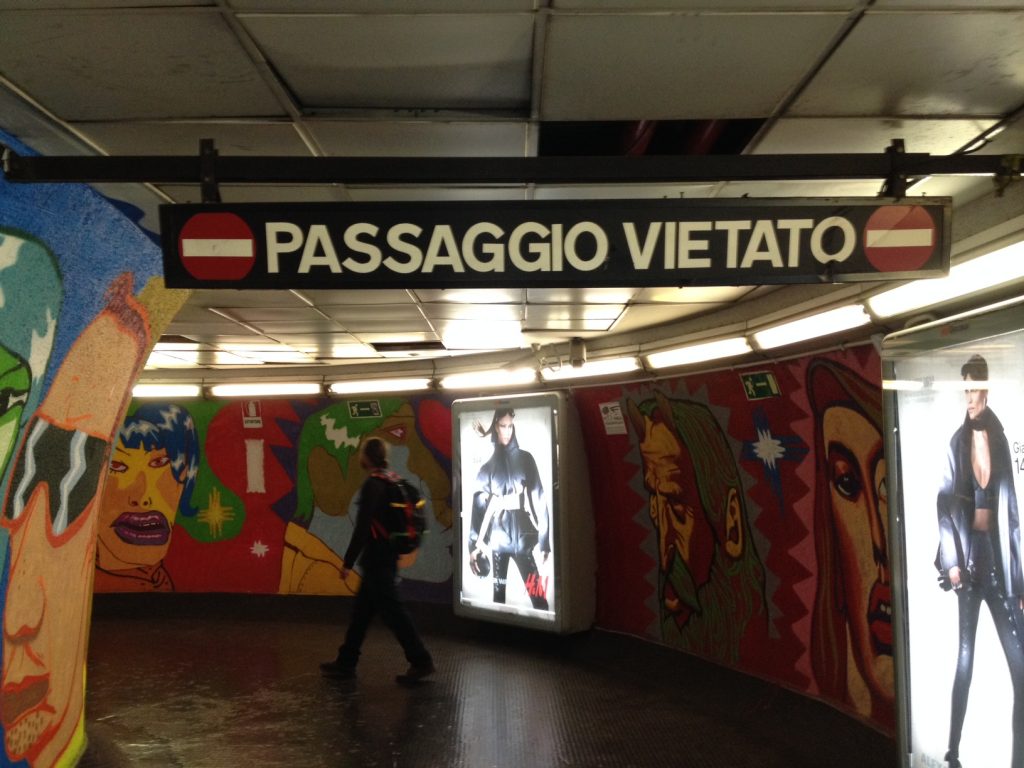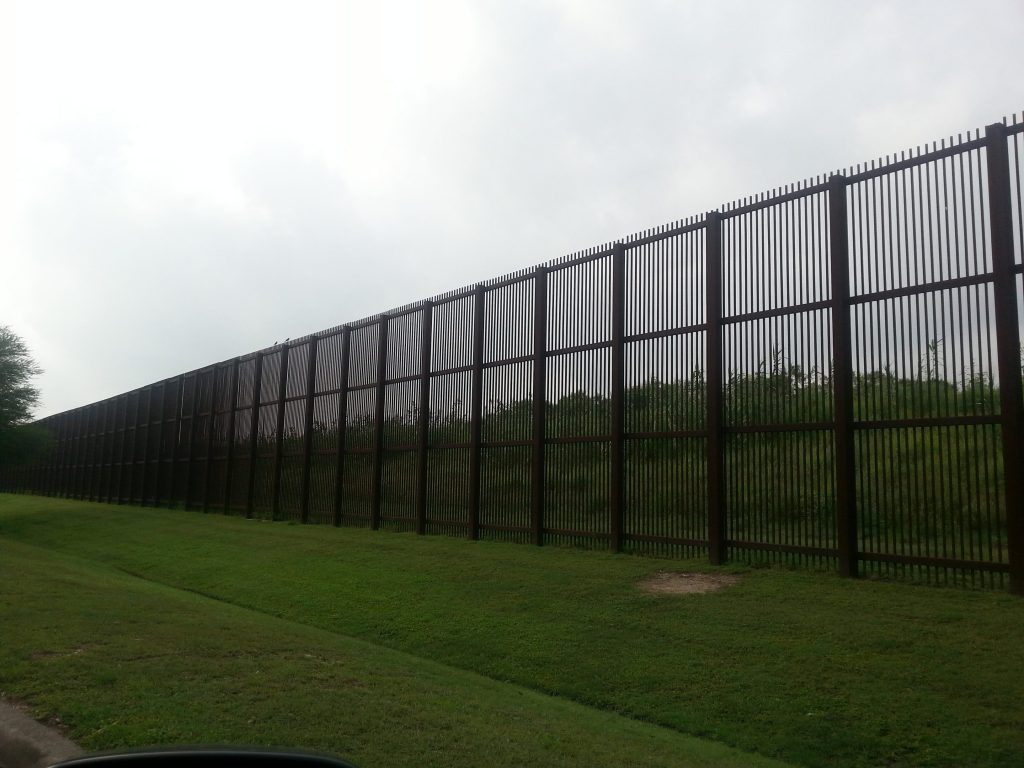Read more
Blog, Migration Governance
The EU referendum and Britain’s broken immigration politics
The decision in 2004 by Tony Blair’s New Labour government to allow unfettered access to the UK for citizens of the 8 central and east European EU newcomers has had monumentally important implications. Most...
We’re now two years into the MIGPROSP project and have conducted more than 200 interviews with “actors” in migration governance systems in Asia-Pacific, Europe, North America and South America. By actors we mean those who seek to make, shape or influence policy at local, national, regional or international level. We have amassed a huge amount of information, but what have we learned so far? This blog highlights three of the emerging themes that we’ll flesh out in later publications.
We draw both from the literature that we have reviewed plus our interview material. The interviews focused on a range of issues, including:
- The personal background and experience of the interviewee and how this impinges on his or her understanding of international migration.
- Whether particular events or incidents have had shaping effects on interviewees’ understanding of international migration.
- What the interviewees see as the main causes and effects of international migration and whether these might change in the future.
- Interviewees’ views on key risks and uncertainties and how to respond to them.
You can keep up with further news and updates about the MIGPROSP project’s development by subscribing to our mailing list.
Emerging issue 1: A new normal?
A key tension that we have identified in major destination countries, particularly in Europe and North America, is between perceptions of:
- a “new normal” — by which we mean the idea that migratory pressures are likely to remain high, alongside
- reactive tendencies in migration governance that can lead to a status quo bias
The resulting tension is between the oft-expressed view that “something should be done”, together with doubts about the capacity of existing institutional frameworks to deliver change.
The phrase “new normal” has certainly cropped up in our interviews. For example, one European interviewee told us of an EU-US meeting at which people were, as he put it: “repeatedly mentioning that this will be the new normal. These 250,000-280,000 irregular migrants a year, that’s basically what we have to count on in the foreseeable future. Nothing will change in this regard.” Strikingly, the European Commission’s Communication on establishing a new Partnership Framework with third countries under the European Agenda on Migration mirrors this language: “External migratory pressure is the ‘new normal’ both for the EU and for partner countries. This requires a more coordinated, systematic and structured approach to maximise the synergies and leverages of the Union’s internal and external policies”. The “new normal” means the likelihood of persistent and relatively high migratory pressure on Europe’s external borders. Our interviews make it very clear that poverty, inequality and conflict are seen as key drivers of these pressures while demographic and environmental changes can accentuate their effects.

This “new normal” is often seen to require new thinking because of the view that existing approaches have failed or don’t apply in face of these new dynamics. At the same time – and this is the key tension that we identify — migration governance is widely seen as having strongly reactive (rather than proactive) tendencies. These tendencies can lead to a status quo bias that militates against the kinds of reforms or changes necessary at the policy and institutional level to respond to this “new normal”.
Some of our EU and US interviews illustrate the point. A US official got to the heart of the issue when stating that immigration policy is “so reactive … it seems to be limping along just fine so why rock the boat? If we rock the boat somebody might see us and want to, like, you know, make even more changes.” Another US official echoed this theme: “I think there’s a reluctance to do anything that might make the flood start again. So maybe a risk averseness. Well, so we don’t know what stopped the floods. So anything — all of the actions we took we’re hesitant to change, because any one of them could have been the one.”
In Europe we also find that the strongly negative politicization of immigration in many EU member states acts as a powerful constraint on change. As one of our European interviewees put it: “You have politicians who are terrified that the next move they make is going to see them out of office”. Another of our European interviewees identified the effect of populist and anti-immigration political parties: “The biggest uncertainty is our internal politics rather than the actual phenomenon of migration. It’s the Le Pens, it’s the UKIPs, the True Finns, the Sweden Democrats, the AfDs, the PEGIDAs or whatever movements. They’re much more difficult in that sense; so, it’s actually on the perception side and the reaction side, which are much more difficult to master.”
Particularly amongst governmental and official actors in destination countries, MIGPROSP research suggests that not only is change seen as difficult to deliver, but change itself is viewed as problematic because of the possibility of unforeseen consequences in an unstable and highly politicised policy field.
Emerging issue 2: The causes and limits of deterrence
Deterrence has become a key theme in the rationale for immigration polices and in the academic analysis of the cause and effects of migration laws and policies. What our research shows is that ideas about deterrence -– particularly in major destination countries in Europe as well as the USA and Australia — are based on a particular view of the causes of migration and a strong emphasis on “pull factors”.
There are many ways in which states might seek to deter would-be migrants from making their journeys. Part of our MIGPROSP research saw us travel down to South Texas to try to understand more about the causes and effects of border controls, fences and walls. The USA has experienced the migratory effects of conflict and violence in neighbouring states such as Mexico and, more recently, the Northern Triangle Central American (NTCA) countries of El Salvador, Guatemala and Nicaragua. More than 63,000 unaccompanied minors crossed the US southern border between October 2013 and July 2014, of which two thirds came from NTCA countries. In a strategy redolent of the EU’s attempt to deter Mediterranean crossings, a 30 June 2014 White House Press release stated the need to:
send a clear message to potential migrants so that they understand the significant dangers of this journey and what they will experience in the United States. These public information campaigns make clear that recently arriving individuals and children will be placed into removal proceedings, and are not eligible for the Deferred Action for Childhood Arrivals process and earned citizenship provisions that are part of comprehensive immigration reform currently under consideration in the Congress …. we will continue to use multiple channels to counteract the misinformation that is being spread by smugglers.
This language and practice of deterrence is also evident in Europe where there is much talk of “disrupting’ the business models of smugglers and traffickers. This common language and approach does not emerge by chance or coincidence: there is extensive communication between major immigrant destination countries.

In Europe, deterrence has a strong welfare state dimension. The Austrian Foreign Minister Sebastian Kurz was strongly critical of Germany’s more open approach to the refugee crisis and claimed in March 2016 that: “These people don’t come to Europe because they want to live on Lesbos. They come here because they want to enjoy the living standards and benefits they are guaranteed in countries like Austria, Germany or Sweden … Don’t get me wrong, I don’t blame these people; I can understand them, because many politicians have triggered false hopes” (The Observer, 6 March 2016).
The UK was identified as “hyper sensitive” to the deterrence rationale by a member of another EU state’s Brussels delegation. This perceived hyper-sensitivity meant that the UK government did not in late 2015 support extension of the Italian-led Mare Nostrum search and rescue mission in the Mediterranean because being rescued was seen as a pull factor for migrants.
Ostensibly, it seems plausible that a country’s relative attractiveness (land of opportunity, welcoming, rich etc) and openness (ease of entry, rights and benefits extended to newcomers) could drive migration. The potential limits of such a view are that it over-emphasises pull factors, downplays push factors and neglects the role played by migration networks. Pull-factor perspectives can also swiftly translate into deterrence-based approaches. The reasoning goes as follows: migrants come because of country x’s attractiveness and openness, so things need to be made much more difficult to hinder the operation of this pull factor.
A familiar theme in interviews in North America and Europe was a perception that the openness and attractiveness of the destination country are key drivers of migration. However, while Canadian interviewees highlighted the desirability of being seen by migrants as open and attractive, in Europe and the USA we found a more negative view of openness that can feed into ideas about the motives for migration and migrants’ strategies. Perceptions regarding the chance of getting into the US and the role played by communication between migrants are evident in the following quote from a US interviewee:
And if things are pretty crappy but they are not absolutely horrible and there is a chance in the United States; and all of a sudden you start hearing stories like, “Hey there’s a lot better chance now than there was before if you do X, Y and Z”. That can start a snowball. It is a cost benefit analysis.
Another US interviewee discussed her experience of the interdiction and screening at sea of Cuban migrants (the so-called “wet foot/dry foot” policy): “[It] showed to me that where migrants had a sense that their chances of success actually getting to the US were high, they would do something illegal or something dangerous. So that, too, showed me that we have to make clear that the chances of success are not high and we have to demonstrate that in the policy choices we make.”

Interpretations of the effectiveness of fence building are related to the idea of openness as a driver. In the US, some saw fence building as a success in stemming the flow while those opposed to policy noted negative effects on “circular migration”. These contrasting perspectives can be seen in the following quotes from two US interviewees:
People decided that post-9/11 we want to do something about the border … almost 700 miles of fencing on the south-west border and that’s made a difference. People were always asking us, “Does it work? Does it not work? You got all this investment. What are we getting for our return?” We’ve really gotten very good at protecting large pieces of border that were previously unprotected or ineffective in our response … If there is opportunity here, people are going to come, but also if they’re caught and sent back, they stop coming. The economics don’t work for them. You can only make a couple of attempts.
There’s a funny thing that we did in the United States: the people who were more restrictionist, opposed to immigrants, decided to build a wall … When they built the wall, what they did is they kept people in. Before, people would go back and forth, certainly the Mexican community, and so it was a major change that it was harder to get in; therefore, people stopped going home. Once they stopped going home, their ties became more to the United States, so in a way it’s very ironic that the people who least want immigrants are arguably the cause why the numbers started to go up. I just think that’s been an interesting kind of behaviour.
For all these actors, the understanding of the causes of migration is shaped by a sense of the centrality of economic factors as both reasons to move and reasons to choose destinations. MIGPROSP research shows that pull-factor based perceptions with their links to a deterrence strategy are strongly evident amongst government actors in Australia, Europe and North America.
Emerging issue 3: Climate change is a problem, but it’s for the future…

MIGPROSP interviews asks people to think about whether the causes and effects of migration as they see them might change in the future. The point is that understandings of the future can reveal characteristic features of migration governance systems now. We anticipated that economic and political factors would remain the key drivers. When we asked our interviewees whether they thought other challenges might emerge, by far the most frequent response was climate change. However, this was often a challenge projected into the future, which is interesting for at least three reasons.
First, empirically, there is evidence that climate and environmental change are affecting migration now. Second, this is revealing of the reactive tendency in migration governance and difficulties planning ahead we identified in Emerging issue 1. Third, migration linked to climate change was seen to raise major conceptual and data gathering challenges because of the ways in which environmental effects can be detected, measured and then classified into categories such as “environmental migrants” or, more controversially, “climate refugees”.
The awareness of climate as a factor but its projection into the future is evident in a quote from one of our European interviewees: “You’re going to have climate. Clearly, the effects of climate change will become a big driver of migration”. Similarly, from another European interviewee: “Climate situations … but you never know. We keep on saying that the climate changes will cause starvation and difficulties in crops and these kinds of things. I don’t exclude that climate reasons will increase and justify more causes for migratory movements.” One of our US interviewees identified the difficulty of delineating climate effects when telling us that: “Obviously people talk about climate change but I think … Climate change, I don’t think it’s an immediate driver itself, it’s tied up with poverty and people searching for a better life. It’s not the immediate cause itself.”
These understandings and their effects pose a challenge to governance systems. There have been alarming (and alarmist) overestimates of potential numbers of people moving as a result of environmental change. But this is an issue that our interviewees tend to project into the future even though there is evidence that environmental and climate change are causing displacement and migration now.
Asking interviewees to assess the likely drivers of migration in the future is revealing for two, linked reasons. First, it shows that economic drivers (relative inequalities of income and wealth) and political drivers (conflict within and between states) are expected to remain to the fore. The perception of a “new normal” is predicated upon the continued existence of powerful economic and political drivers. Second, when asked to think about future drivers, environmental and climate changes were often to the fore in interviewees’ thinking, but, significantly, frequently projected as issues for the future. Not only is this indicative of the view about climate as a driver of migration, it also demonstrates the inertial and reactive tendencies in migration governance.

